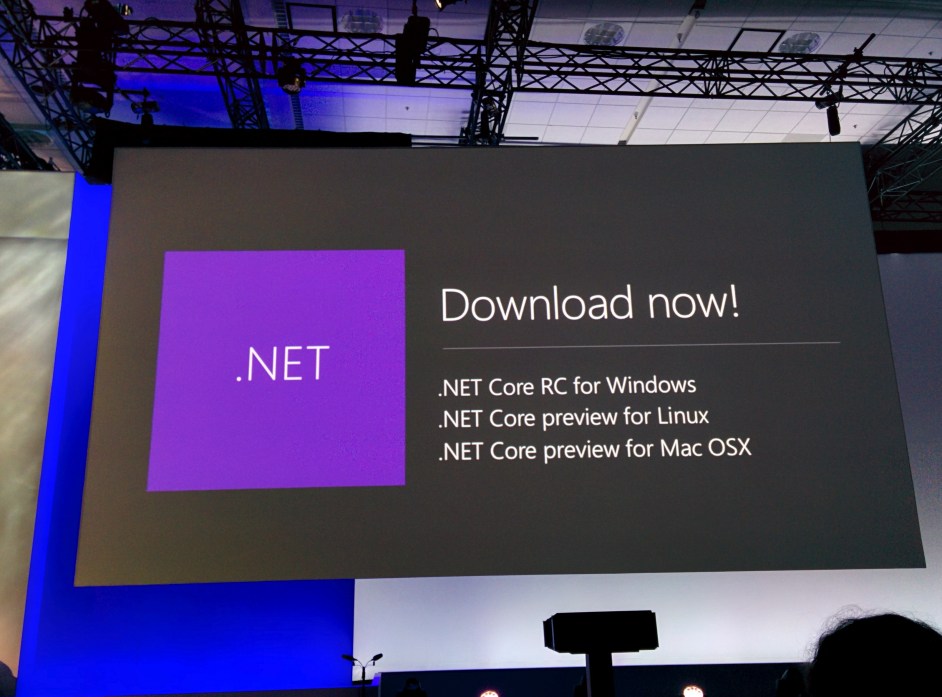
Last November, Microsoft said that it would bring some of the core features of its .NET platform — which has traditionally been Windows-only — to Linux and Mac. Today, at its Build developer conference, the company announced its first full preview of the .NET Core runtime for Linux and Mac OS X.
In addition, Microsoft is making the release candidate of the full .NET framework for Windows available to developers today.
The highlight here, though, is obviously the release of .NET Core for platforms other than Windows. As Microsoft VP of its developer division S. “Soma” Somasegar told me earlier this week, the company now aims to meet developers where they are — instead of necessarily making them use Windows — and .NET Core is clearly part of this move.
Microsoft says it is taking .NET cross-platform in order to build and leverage a bigger ecosystem for it. As the company also noted shortly after the original announcement, it decided that, to take .NET cross-platform, it had to do so as an open source project. To shepherd it going forward, Microsoft also launched the .NET Foundation last year.
While it’s still somewhat of a shock for some to see Microsoft active in the open-source world, it’s worth remembering that that the company has made quite a few contributions to open source projects lately.
Even before the .NET framework announcement, the company had already open-sourced the Roslyn .NET Compiler platform. Earlier this year, Microsoft shuttered its MS OpenTech subsidiary, which was mostly responsible for its open source projects, in order to bring these projects into the overall Microsoft fold.
Comments
Post a Comment